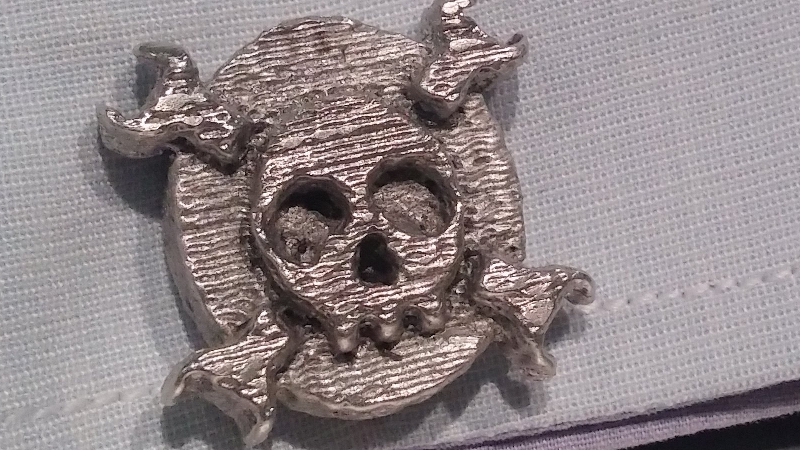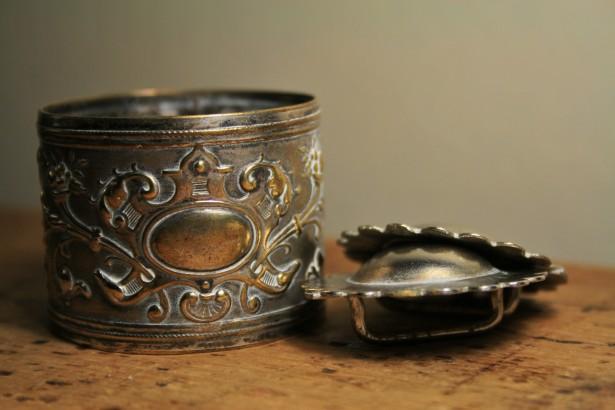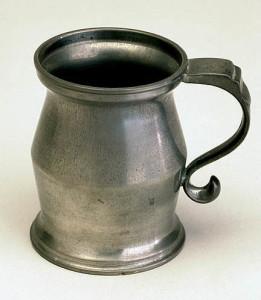If you’re looking for a great 3D printing-related winter project — specifically wintry as it involves creating something marvelous with molten metal — then we may have found the ideal one for you. With this project, you’ll create a 3D printed mold for casting in pewter. It may sound complicated, but thanks to some pretty straightforward instruction videos, Hackaday.io (the “io” stands for “British Indian Ocean Territories”) contributor Brendan Sleight, who goes by “bms.had” on Hackaday, this project is completely within the grasp of most of our readers, although we recommend adding a sturdy set of oven mitts to the supply list.
First, let’s dispel some reasonable fears surrounding handling molten metal. Specifically, let’s talk pewter. Pewter is a metal alloy, typically composed of anywhere from 85 to 95% tin with the remaining components being copper, bismuth, antimony and lead. These days, you see lead-free pewter and this project uses the lead-free version, which you can get fairly easily from a variety of sources, including on eBay. The going rate seems to be around $20 for a pound of the material.
Pewter is very malleable and has a low melting point of around 170° to 230°C (338° to 446°F); the variance is based on the exact mixture of metals used. Pewter tends to have a slightly to roughly porous surface and a blue cast. It has been used for thousands of years, including by the ancient Egyptians and Romans. It was a popular material in medieval Europe and then its popularity waned when techniques for creating pottery and glass made it a less desirable material for producing objects for everyday use.
Pewter that included lead was especially problematic — probably obviously — if it was used to make containers and implements for use with food. These days, though, as we’ve already mentioned, you can get lead-free pewter; this project uses it specifically to produce cufflinks but you can cast whatever you’d like. The only limitation has to do with size. That is, don’t design something that’s bigger than your 3D printer can produce as you will want to print a mold that consists of only one piece.
Begin this hot winter project by assembling the tools and materials you’ll need to see it through to completion. You’ll need some lead-free pewter. Look for a good source near where you live or order some online. Make it a point to find out what metals make up the pewter you buy and ask what the melting point is. You will need a cheap toaster oven. You will also need a 3D printer and you’ll be using PLA to create the mold for your object. As for the skills required, you will need to know (or learn) how to design the mold for your object. Evidently Sleight used Tinkercad to convert the solid design of the cufflink to a negative space around which he added mass to contain the pewter once it is poured into the hole — a funnel you insert in the 3D modeling program you use — at the top of the mold. It probably goes without saying, but be sure to watch his videos before you begin this project.
Now that we’re clear that the pewter is going to be hot when you pour it into the mold, we’ll address a concern that may have already occurred to you: the possibility of the molten pewter melting the PLA. If you’re familiar with 3D printing with PLA, you will probably know that PLA (or polylactic acid) is the biodegradable printing filament made from renewable materials like corn starch. This bioplastic can withstand temperatures of up to about about 100°C (212°F) before it starts to melt, at which point it smells like someone is making candy.
If PLA starts melting at 100°C, you may be asking, “How can it possibly function as a mold for the molten pewter?” That’s a good question to which Sleight provides a solution: if you quench (basically, this means you give the mold with the freshly-poured pewter a quick bath), then you can halt the melting process. If the quench is a bit slower, then a little bit of melting will actually prove beneficial in that the melting PLA provides a smoother surface against which the pewter can cure.
Once you’ve completed the quench, you will place the mold in an oven set to a specific temperature. The PLA will soften before the pewter does, so you get it warm enough to permit you to peel it away from the object you’ve just cast. It probably goes without saying that you will be destroying your mold, so if you’re making a pair of objects like Sleight’s cufflinks, for instance, be sure to 3D print two molds.
We can’t emphasize enough how important it is to do the pre-project prep if you’re enticed by this creative hack. Also be sure you’re working in a well-ventilated space. Also check out advice from people experienced with working with pewter for tips on how to clean up the object you cast once you’ve freed it from the mold. Lastly, be sure to share your success (and failure) stories here and with Sleight. Let us know your thoughts on this project in the PLA Mold and Pewter Casting 3D Printing forum on 3DPB.com.
Subscribe to Our Email Newsletter
Stay up-to-date on all the latest news from the 3D printing industry and receive information and offers from third party vendors.
You May Also Like
Profiling a Construction 3D Printing Pioneer: US Army Corps of Engineers’ Megan Kreiger
The world of construction 3D printing is still so new that the true experts can probably be counted on two hands. Among them is Megan Kreiger, Portfolio Manager of Additive...
US Army Corps of Engineers Taps Lincoln Electric & Eaton for Largest 3D Printed US Civil Works Part
The Soo Locks sit on the US-Canadian border, enabling maritime travel between Lake Superior and Lake Huron, from which ships can reach the rest of the Great Lakes. Crafts carrying...
Construction 3D Printing CEO Reflects on Being Female in Construction
Natalie Wadley, CEO of ChangeMaker3D, could hear the words of her daughter sitting next to her resounding in her head. “Mum, MUM, you’ve won!” Wadley had just won the prestigious...
1Print to Commercialize 3D Printed Coastal Resilience Solutions
1Print, a company that specializes in deploying additive construction (AC) for infrastructure projects, has entered an agreement with the University of Miami (UM) to accelerate commercialization of the SEAHIVE shoreline...































